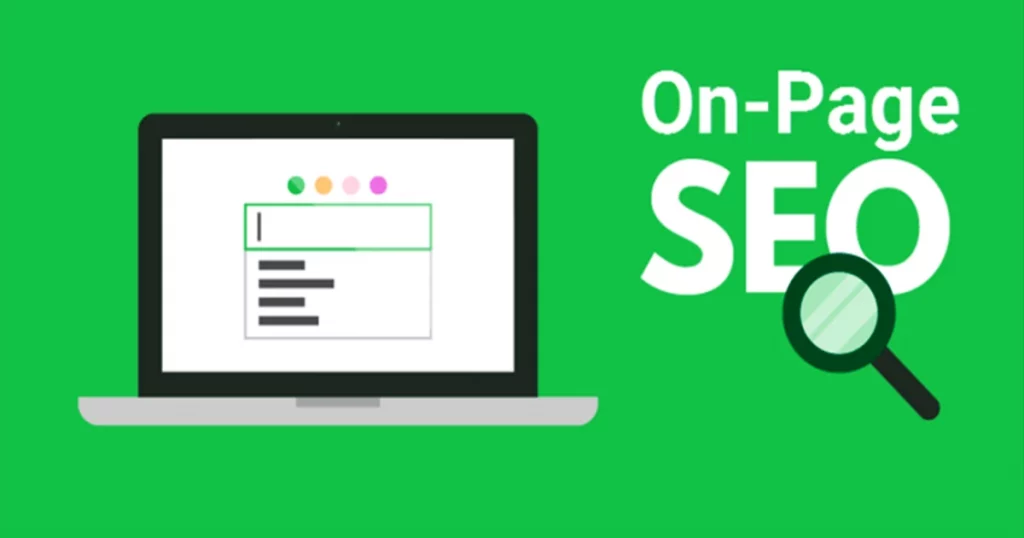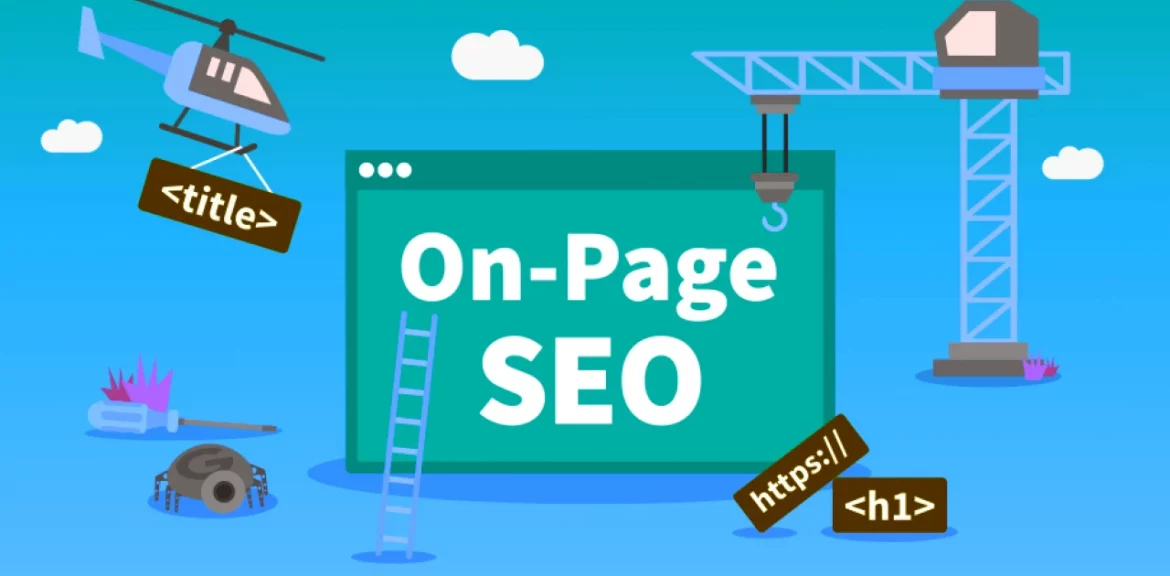On-page SEO is as important as all the other forms of SEO techniques needed for the optimization of your website. To make your site and blog rank higher on SERP, we have an article on 12 Essential On-Page SEO Factors You Need To Know
It is the simplest form of SEO, yet it can be complex if you don’t know how to go about it, So, in this article, we will explore some of the essential on-page SEO factors you need to know for better ranking on SERPs.
Let’s get started;
Table of Contents
What is on-page SEO?
On page SEO involves the process of optimizing the web pages of a blog to help search engines understand your site better and also increase visibility on SERPS.
Circumspectly, sites that rank on the first page of Google, especially the first five get more than 60% of clicks, while the others get little from the percentage that is left, this is why you need to take your on page SEO technique seriously.
What’s the difference between On page SEO and Off-page SEO?
The difference between On-Page and Off-Page SEO is that while the former focuses on SEO factors and techniques within your control, the latter focuses on SEO factors outside your website, like a link from another website to yours, it focuses more on increasing the authority of the domain outside the website.
On-Page SEO is a crucial part of search engine optimization and it can’t be sidelined especially if you are looking at ranking on SERPs, it can be cumbersome at first, but with time, you will get used to it.
Below, I have listed 11 essential on-page SEO factors you need to know.
11 Essential On page SEO factors
We have seen what on-page SEO is and how important it is for ranking, let’s get into some of the On page factors you can put in place for visibility on SERPs.
Let’s dive in
1. Add keywords to your title tag
Title tags are essential on page SEO factors because this determines whether or not your site will be noticeable on Serps.
A title tag is the title of a Web page when searched on Google.
For example, when you type in a query on google, you will get tons of results, those words that are wrapped in blue colour are the title tags.
To optimize your title tags using the best on page Seo practice;
- Your title tags should not be too long, they should be between 55 – 60 characters
- Your main keyword should be at the beginning of your title tags, not at the end.
- Avoid keyword stuffing
- Write irresistible titles, something that will compel people to click, you can use the “question” headlines as a title tag.
2. Meta description
These are short descriptions of your Web page not less than 160 characters and it is always beneath the title on Google.
It gives a total summary of what your webpage is all about and it is an essential on page SEO factor you need to know about.
Meta description enhances organic click-through rate, hence it is important to put in a little effort here. Ensure that it first appeals to you.
A bad meta description equals a poor click-through rate while a good meta description acts as an influence on CTR
Additionally, a good meta description should;
- Be kept within the 160 characters
- Be rich with keywords
- Should contain 1 CTA (Call to Action)

3. Keywords
Keywords are the most important component of SEO.
They are what searchers look for on search engines.
For you to get an achievable result in your online business, it is important you do keyword research.
Keyword research is important because it gives an overview of the number of people searching for a specific keyword per month, the keyword difficulty, and the cost per click,
Also, one thing you should always look at when writing content is the keyword difficulty and your domain authority.
You might be wondering if domain authority influences rankings.
Yes! It does, domain authority is how powerful a domain is on SERPs, it is determined by a lot of factors, but the most prominent is the quality of links (backlinks) the site has.
Let’s say your site has a DA of 4, and another site has a DA of 14 and you both are targeting a keyword with a KD of 10, who do you think would rank?
A site with a DA of 14.
This is why you should focus on a keyword with less competition.
There are a lot of tools out there like (semRush, Ahrefs, and Moz) designed for keyword research purposes.
4. Optimize images
The reason why images are used in a blog post is to make the content interesting and captivating.
A long piece of content without images looks boring, hence the need for that Also, blog posts with related images are believed to rank on SERPs more than those without images.
Be sure to make use of original images not copyrighted. You can get free images at pixabay.com and unsplash.com respectively.
Most importantly, to optimize your image, ensure to put keywords in your title, and alt description.
This aids in better ranking on SERPs.
5. Internal linking
Links serve as a medium for crawlers to be able to find your site and to find new content to serve users.
An internal link is a link linking web pages of a blog or website, it allows for easy navigation, which in turn yields a better user experience.
What an internal link does is allow access to other useful resources on your website.
A better way to do it is to;
- Link existing pages that are related to new ones
- Including links of new pages to existing ones
Doing this makes it easier for users to access relevant pages on your site and to also stay longer on your website
Read also:
- 10 WAYS TO USE CONTENT MARKETING TO BUILD BRAND AWARENESS
- How to Watch Big Brother Naija (BBNaija) Online Free on any device
- The Best ECommerce Platforms of 2022
- How to Start a Blog and Make Money
6. Create valuable content
Creating valuable content is one of the most crucial aspects of on-page SEO, your content should solve a problem, it should identify a pain point, and should be able to connect with your readers.
For you to rank on SERPs, you need to write highly engaging and compelling contents that grasp readers’ attention, and also solve users’ needs. Your copy needs to come out with so much clarity that it can be easily understood by your readers.
Your content should have your focus keyword distributed all over the article, avoid keyword stuffing.
There is a way you can draft content around your focused keyword that perfectly fits in without having to do keyword stuffing.
7. Optimize URLs for SEO
URL is like a directive to your site, it is a pathway or an address that leads people to your website. A few years ago, URLs played a key role in SEO.
Bloggers and SEO experts included keywords in their URLs as a part of SEO techniques to help them rank better on SERPs, then, Google came up with a change in algorithm that left URLs with little to no significance on rankings.
Nonetheless, you should still include them in your On page SEO strategy. Your URL shouldn’t be gauche. This means that your URL should be short, concise, and accurate.
It shouldn’t be filled with symbols or numbers
Below is a guide on how to optimize your URL
- URLs should be kept short
- It should be descriptive and should include your focus keyword
- Avoid symbols
8. Improve your User Experience (UX)
A page’s user experience tells how long users will spend on the site and this has a great impact on SEO.
Google stated in their core web vitals update that user experience and page speed is a
part of their ranking factor and they also use behavioral data as a prerequisite to measure how users engage with your pages, which in turn tells Google that your content is of quality and it is valuable to readers.
So, when users are on your site, they should be able to easily navigate.
A good way to measure a good user experience is that users will stay longer on your site, they will navigate to other pages on the site, and they will interact with the tools or services you have to offer.
9. Page speed
Google seeks to serve readers with sites that load faster. sites with slow page load do not stand the chance of ranking as Google has included page speed as a part of their ranking factor.
A way to check your site’s speed is to use GT Metrix or the Google page speed insight tool to analyze your site’s speed.
This tool gives a pictural representation of why your site’s load time is slow, plus, it provides you with suggestions that apply to relative problems.
The negative impact a slow page load has on a site is that users abandon the page even before it loads.
So, if you are looking at ranking on Google, working on your page load’s speed should be something you prioritize.
10. Mobile-friendliness
Ensure your theme is responsive, it should be something a user can easily relate with.
Google recently began to prioritize websites that are responsive on mobile, this is because more than 50% of internet users access the internet via their mobile, and a part of Google’s core value is to serve users with an excellent page experience. Hence, the need for a change in priority.
So, the best advice for website owners is to have a design that is responsive both on mobile devices and desktops, just to be on the safer side.
This is because a site that was designed to be responsive only on a desktop won’t fit well when accessed with a mobile device. It is either the text and images come out blurry or they are too little to see, or some buttons aren’t functional, hidden, or broken.
You wouldn’t want to have this experience with your site, hence it is necessary to have a responsive design that serves both desktop and mobile users seemingly.
11. Include external links in your content
External links also known as outbound links are links pointing from your site to another website with a different domain.
Amazingly, Including external links to your site not only makes it more credible, but also signals to Google that you are not just about writing content that suits the algorithm, but, that you are also interested in providing tangible information and solutions that will satisfy the needs of your target audience.
External links are essential on-page SEO factors you need to include in your SEO tactics.
Conclusion
On-page, SEO is as important as the other aspects of SEO that exist, moreover, the main reason for optimization is so that your site is visible and also ranking on SERPs.
With these 11 essential on page SEO factors that I have provided you with, you should see a remarkable change if you apply these tactics.
However, we must understand that the whole SEO tactic takes patience, After implementing some of these tactics, you still need patience for you to start seeing the result.
The result might not show in days, weeks, or months, depending on the case, but be rest assured that your SEO techniques aren’t something vague.
You would get the result as long as you remain updated on the recent SEO trends and you implement them.
Finally, SEO is one of the most vital aspects of gaining visibility online, if you are looking to open a blog or website.





